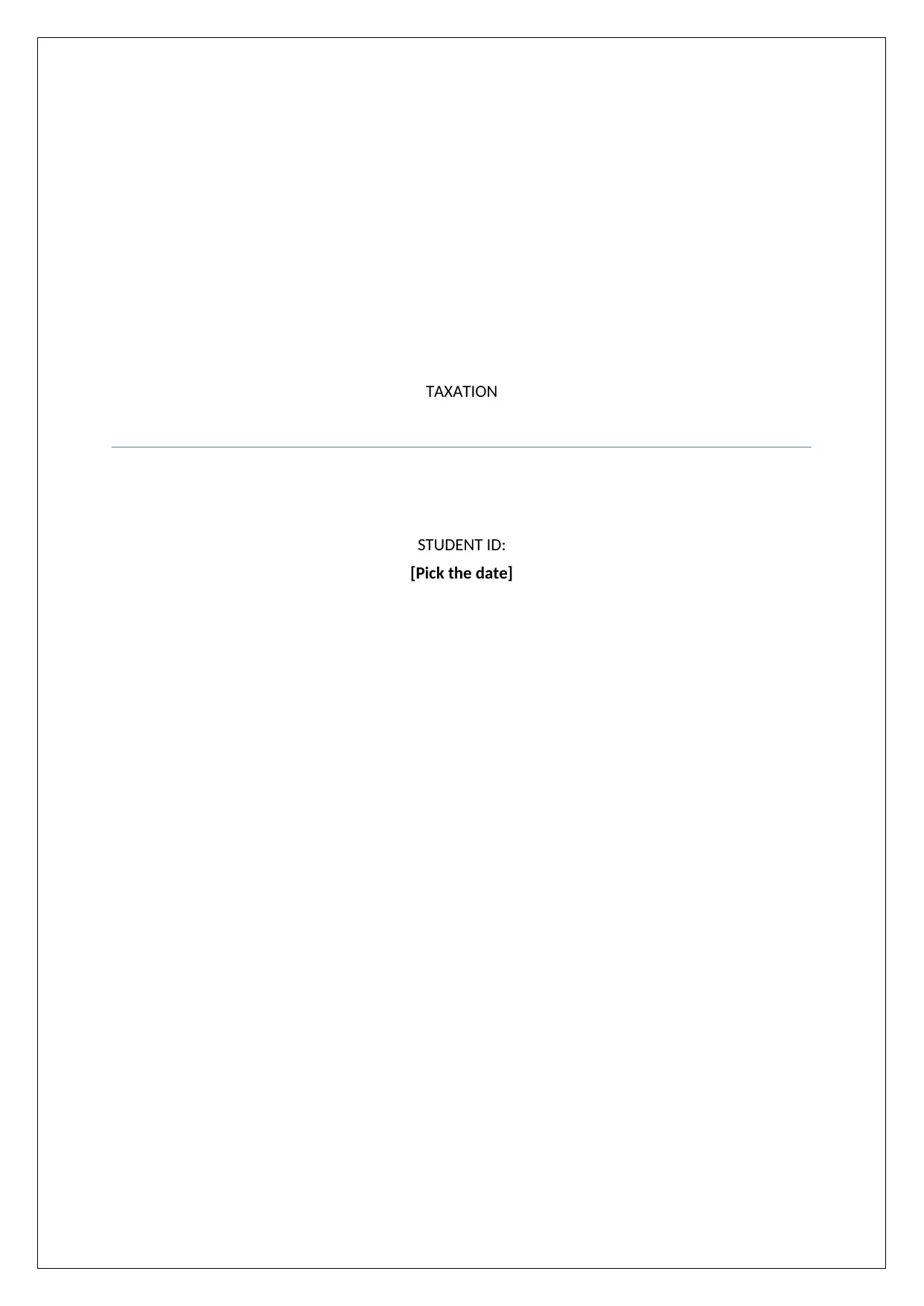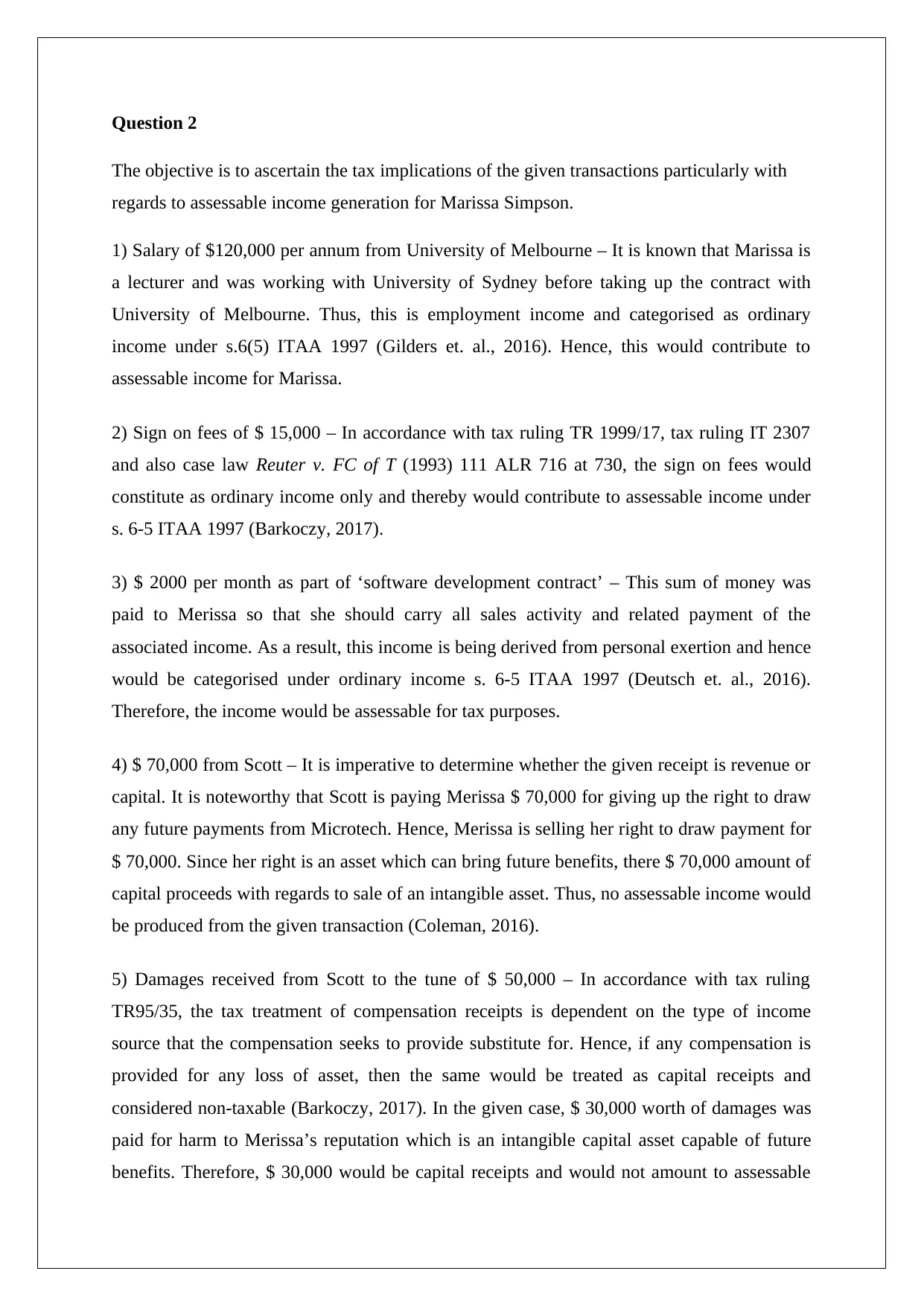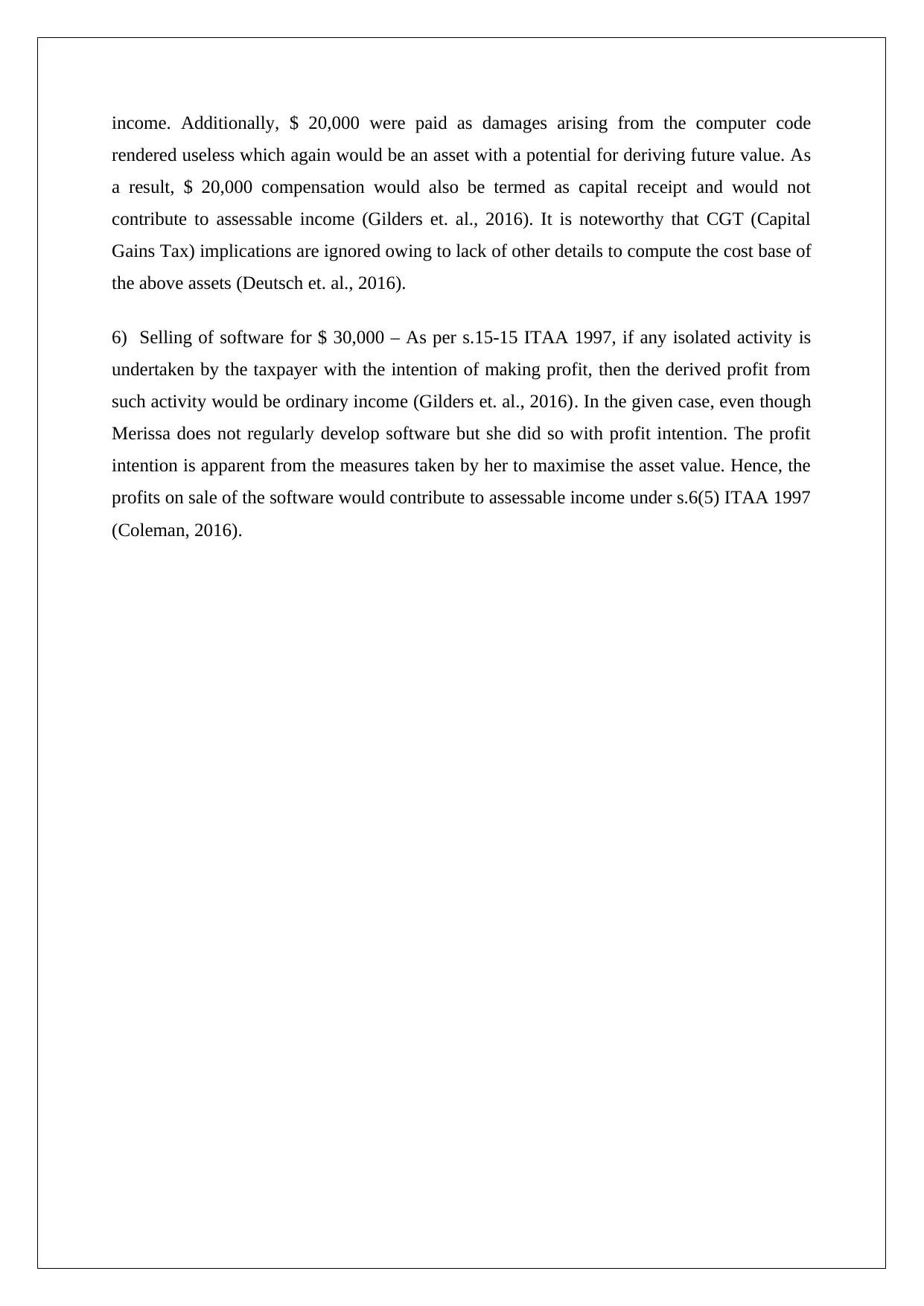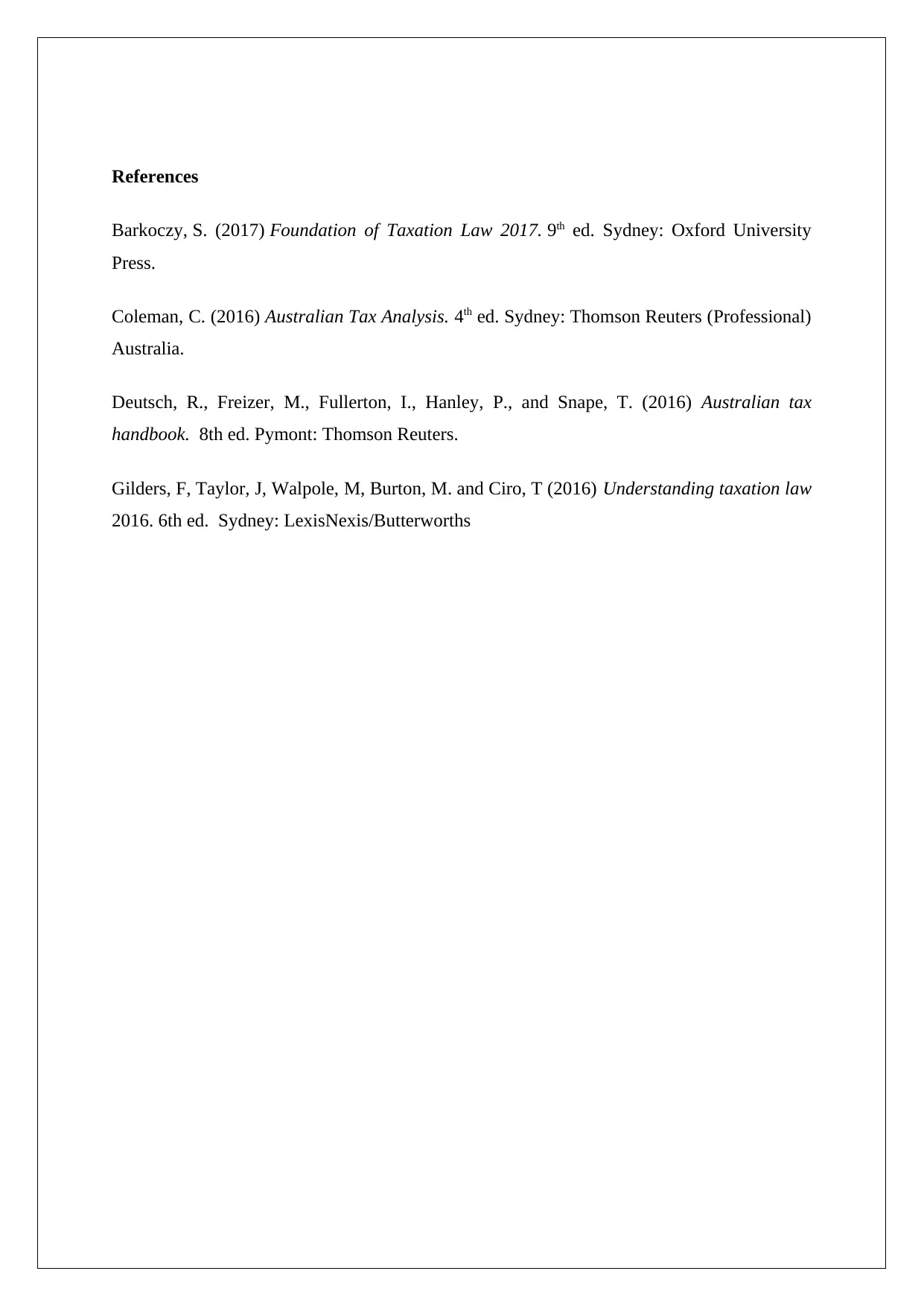ACC30005 Taxation: Assessable Income Analysis for Marissa Simpson
VerifiedAdded on 2023/06/04
|4
|808
|180
Homework Assignment
AI Summary
This assignment focuses on determining the tax implications related to various transactions for Marissa Simpson, specifically regarding the generation of assessable income. It analyzes different income streams such as salary, sign-on fees, software development contracts, payments from Scott, damages received, and software sales. The analysis involves applying relevant sections of the ITAA 1997, tax rulings, and case law to categorize each income stream as either ordinary income contributing to assessable income or capital receipts which are generally non-taxable. The assignment also considers the implications of isolated activities undertaken with the intention of making a profit. Capital Gains Tax implications are acknowledged but not fully explored due to lack of data.
1 out of 4











![[object Object]](/_next/static/media/star-bottom.7253800d.svg)